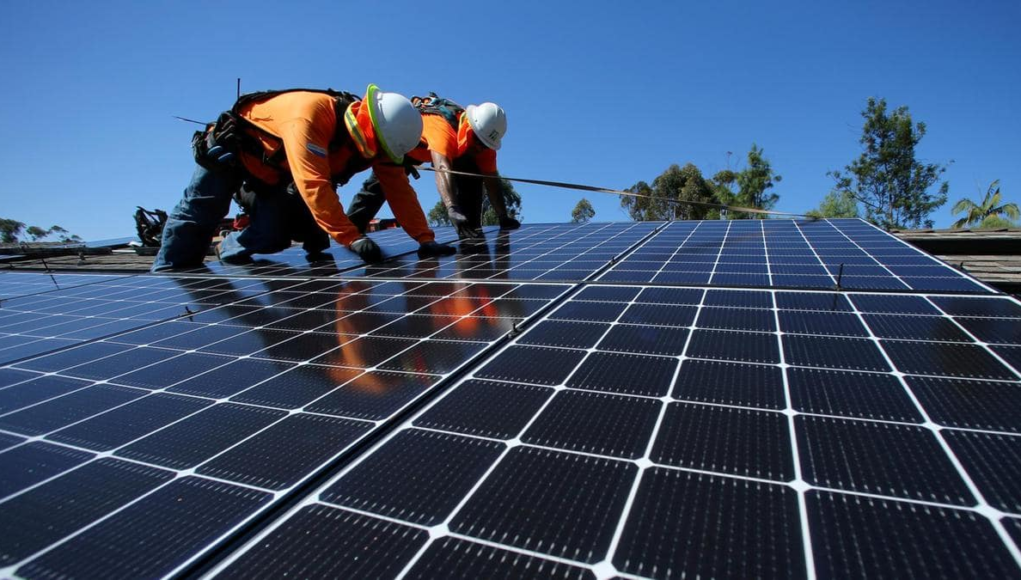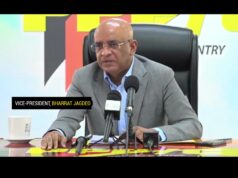With long-standing challenges of sufficient power supply in Guyana, achieving energy security has been a high priority for the People’s Progressive Party/ Civic (PPP/C) government. As evidence of this, the government, in its first trillion dollar budget this year, had allocated almost $100 billion to achieving energy targets. In these first six months, $47.8 billion has already been invested, taking Guyana closer in its pursuit of energy security outlined in the Low Carbon Development Strategy.
So, what has the money been fuelling?
As fruit of Guyana’s burgeoning oil sector, the country is experiencing growth at an unprecedented level. Naturally, the demand for energy has increased for both the domestic and manufacturing sectors. In a bid to proactively address this increase in the short-term, some 28.9 megawatts (MW) of emergency power was installed at the Columbia substation. The country is also receiving a supply of 36 MW of power from a power ship which, connected to the country’s main interconnected system through Everton. In the government’s 2024 Mid Year report it was remarked, “These interventions are expected to improve stability and reliability of electricity supply across the grid and address immediate generation shortfalls.”
On the side of medium-term goals, works continue to progress on the construction of
Guyana’s most transformative development thus far — the 300 MW Gas-to-Energy Project. Already, $40.8 billion has been spent to advance workAdditionally, works were completed on 114 of the 371 pole foundations for the installation of transmission lines. In September, a request for proposals (RFP) was extended to qualified firms to design, finance, and operate Phase Two of the project, under a 20- to 25-year Power Purchase Agreement (PPA). Looking ahead, the installation of transformers is scheduled to begin in the fourth quarter of 2024. With respect to the long-term energy investment, the 165 MW Amaila Falls Hydropower Project remains under active consideration by the Guyana government.
Works have also advanced to improve solar power and mini hydropower generating capacity. In the first half of the year, a 0.65 MW solar farm in Mahdia was substantially completed and is expected to be commissioned in the second half of the year. Additionally, works for three solar farms will advance later this year, namely a 10 MW solar farm in Berbice, 8 MW solar farm in Essequibo and a 0.6 MW solar farm at Leguan. A total of 3,101 solar energy home systems were distributed in the first half of the year to support households in the off- grid and riverain communities. It is expected that 501 more will be delivered to Chenapao, Karisparu, Tuseneng, Maikwak and Cashew Island by the end of the year.
In line with the government’s commitment to expanding hydropower usage, significant progress has been made on the construction of the mini-hydropower plants at Kumu and Moco Moco, with capacities of 1.5 MW and 0.72 MW, respectively. Both projects are slated for completion by the fourth quarter of 2024. Furthermore, contracts have been signed to upgrade the primary distribution networks in Ituni, Kumaka, and Kwakwani, with work expected to be finalized by the end of the year. These upgrades will enhance electricity reliability in these communities and provide access to over 475 new households.
How do all of the previous points tie into the new and expanded LCDS?
Through this national development blueprint, the government returns to a strategy of reducing emissions associated with electricity generation by utilising the lesser-emitting natural gas and renewable energy (solar, hydro, and wind). This is being done through a combination of: (i) investment in transformational energy infrastructure across the generation and transmission systems; (ii) fiscal incentives and government policies to support the use of renewable energy at the level of households and businesses; (iii) investments to improve energy efficiency. The LCDS projects that by 2030, 70% of Guyana’s energy mix will be supplied through lesser-emitting and renewable energy sources.













